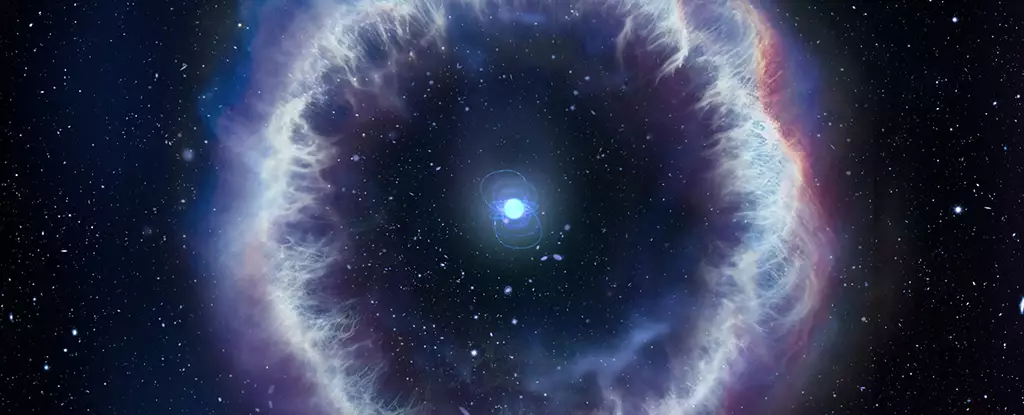Fast radio bursts (FRBs) have long captured the attention of astrophysicists worldwide due to their sudden and intense blasts of radio wave energy from deep space. A recent study conducted by a team from the Italian National Institute for Astrophysics (INAF) sheds new light on the potential sources of these enigmatic phenomena.
The researchers focused on analyzing FRB 20201124A, which was originally discovered in 2020. In particular, they delved into a persistent radio source (PRS) near the FRB, a phenomenon that has been observed near a select few FRBs in the past. Their findings indicated that the signals from the PRS likely emanated from a plasma bubble enveloping the mysterious source of the FRB. This plasma bubble, known as an ionized nebula, consists of electrically charged gas and dust, adding further intrigue to the nature of FRBs.
The data collected by the researchers, utilizing observations from the Very Large Array (VLA) Radio Telescope in New Mexico, pointed towards potential sources of the FRB signals. The nebula in question could be linked to a young magnetar or a binary system featuring a neutron star or a black hole. These cosmic entities possess the capability to generate vast amounts of energy, which could trigger the intense FRB signals detected by the team.
Astrophysicist Gabriele Bruni, from the INAF, highlighted the significance of the findings, stating, “Through radio observations of one of the bursts that is nearest to us, we were able to measure the weak persistent emission coming from the same location as the FRB, extending the radio flux range explored so far for these objects by two orders of magnitude.”
Further insights were gleaned from data collected by the Northern Extended Millimeter Array (NOEMA) and Gran Telescopio Canarias telescopes, providing crucial information on the energy release from the system at different wavelengths of light. This detailed analysis plays a pivotal role in deciphering signals originating from over a billion light years away.
Astrophysicist Brendan O’Connor, from Carnegie Mellon University in the US, emphasized the significance of the high-resolution data, stating, “It’s not spread out over a large region of the host galaxy, which you would expect for star formation.” This observation hints at the unique nature of the FRB source and aligns with the characteristics expected from a magnetar nebula.
Further Exploration and Discoveries
While many questions still remain unanswered regarding FRB 20201124A, the research undertaken by the INAF team represents a significant step forward in unraveling the mysteries of these cosmic phenomena. By gaining a deeper understanding of the potential sources of FRBs, scientists are edging closer to comprehending the complex processes at play in the vast expanse of space.
As O’Connor aptly describes, “The new data taken at radio wavelengths with improved angular resolution provides a clearer picture, likened to viewing something in 1080p instead of 720p.” This enhanced resolution opens up new avenues for exploration and discovery, offering a glimpse into the intricate mechanisms behind the enigmatic FRBs.
The study conducted by the INAF researchers sheds valuable light on the origins of FRBs, bringing us one step closer to unlocking the secrets of these celestial phenomena. Through continued research and advancements in technology, the mysteries of fast radio bursts may soon be deciphered, unraveling the enigmatic nature of our universe’s most intriguing cosmic signals.


Leave a Reply